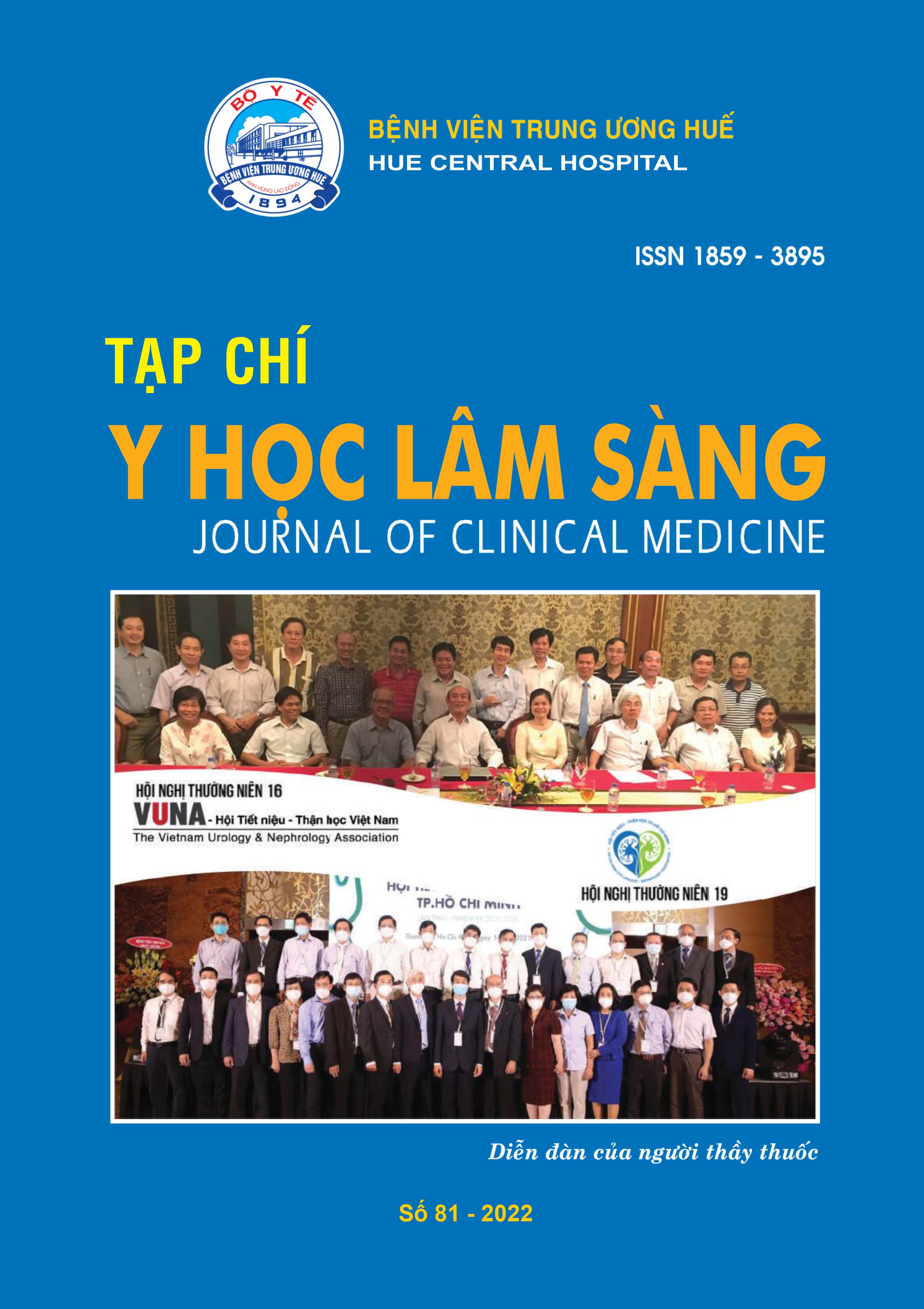Abstract
Purpose: Using CROES nomogram to predict treatment success of percutaneous nephrolithotomy on patient in lateral position assessment.
Material and method: From March 2021 to July 2022, we follow 68 case treated by Mini - PCNL on patients in lateral position. We collected preoperative predictors to calculate CROES nomogram and evaluated the stone - free rate after 1 month. Predictors include stone burden, location, prior treatment, count, staghorn stone and case load. Patient were eveluated for stone free status using x-ray of urinary system. Treatment success was defined as no visible stones or residual fragments less than 4mm. Chi - square and Fisher Exact test were used to evaluated the relationship between preoperative predictors and stone - free rate. Multivariate regression was used to model the influence of predictors. ROC curve was used to evaluated the predictive accurary of CROES nomogram.
Result: Stone burden, location, count, staghorn stone and case load influecce the stone - free rate. ROC curve of CROES nomogram was 0,921.
Conclusion: CROES nomogram can predicts the stone - free rate of PCNL on patient in lateral position assessment.
References
Türk C, Knoll T, Petrik A, Sarica K, Skolarikos A, Straub M, et al., Urolithiasis. 2017, Citeseer.
Smith A, Averch TD, Shahrour K, Opondo D, Daels FP, Labate G, et al. A nephrolithometric nomogram to predict treatment success of percutaneous nephrolithotomy. The Journal of urology. 2013;190:149-156.
Rosette Jdl, Assimos D, Desai M, Gutierrez J, Lingeman J, Scarpa R, et al. The clinical research office of the endourological society percutaneous nephrolithotomy global study: indications, complications, and outcomes in 5803 patients. Journal of endourology. 2011;25:11-17.
Shahrour K, TomaszewskiJ, OrtizT, Scott E, Sternberg KM, Jackman SV, et al. Predictors of immediate postoperative outcome of single-tract percutaneous nephrolithotomy. Urology. 2012;80:19-26.
Zhu Z, Wang S, Xi Q, Bai J, Yu X, Liu J. Logistic regression model for predicting stone - free rate after minimally invasive percutaneous nephrolithotomy. Urology. 2011; 78:32-36.
Alyami FA, Skinner TA, Norman RW. Impact of body mass index on clinical outcomes associated with percutaneous nephrolithotomy. Canadian Urological Association Journal. 2013;7:E197.
Bagrodia A, Gupta A, Raman JD, Bensalah K, Pearle MS, Lotan Y. Impact of body mass index on cost and clinical outcomes after percutaneous nephrostolithotomy. Urology. 2008;72:756-760.
Thomas K, Smith NC, Hegarty N, Glass JM. The Guy’s stone score - grading the complexity of percutaneous nephrolithotomy procedures. Urology. 2011;78:277-281.
| Published | 05-01-2025 | |
| Fulltext |
|
|
| Language |
|
|
| Issue | No. 81 (2022) | |
| Section | Original article | |
| DOI | 10.38103/jcmhch.81.14 | |
| Keywords | Sỏi thận, lấy sỏi thận qua da cổng nhỏ tư thế nằm nghiêng, toán đồ CROES, thang điểm GUY. Nephrolithiasis, mini - PCNL on patient in lateral position assessment, CROES nomogram, GUY score. |

This work is licensed under a Creative Commons Attribution-NonCommercial-NoDerivatives 4.0 International License.
Copyright (c) 2022 Journal of Clinical Medicine Hue Central Hospital

